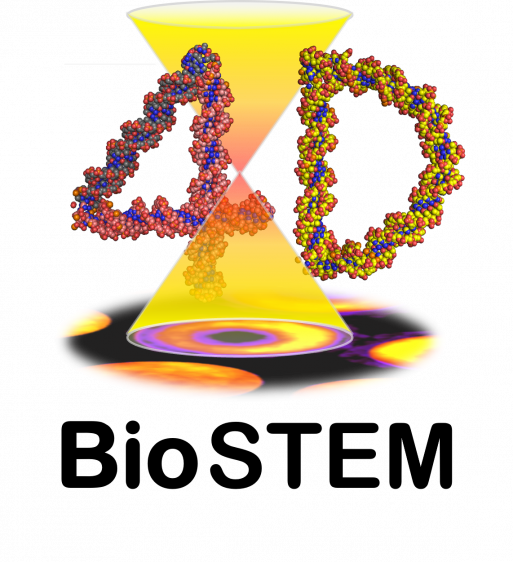Transmission Electron Microscopy - Group of Prof. Dr. Müller-Caspary
%%% Great news from Bruxelles %%

Together with our partner groups of Prof. Dr. Carsten Sachse (Forschungszentrum Jülich, D) and Prof. Dr. Henning Stahlberg (EPFL Lausanne, CH), we received funding from the European Research Council (ERC) within the "Synergy Grant" call 2023. During the coming 6 years starting from January 2024, we will develop new methodologies to enhance contrast and spatial resolution in structural biology imaging and for investigating organic matter in general. Using four-dimensional datasets that combine diffraction and real space information, our consortium will explore new experimental setups, acquisition schemes and processing algorithms for transmission electron microscopy (TEM) of, e.g., proteins and cells at cryogenic temperatures.
My thanks go to the ERC for funding, my two partners for the creative proposal preparation phase and especially my whole group for working out excellent preparatory results which made our 4D BioSTEM project possible!
Knut Müller-Caspary
Links:
Pressemitteilung Bayerisches Staatsministerium für Wissenschaft und Kunst
Pressemitteilung Ludwig-Maximilians-Universität
4D-BioSTEM Project Homepage
Investigating structure, composition and electrical properties down to the atomic scale
Welcome to the Müller-Caspary group!
Both nature and our society pose challenges to the natural sciences that require a detailed understanding of soft and hard matter at the atomic scale and even below. Our group at the LMU faculty of chemistry and pharmacy has dedicated its scientific activities to the application, as well as the development of novel transmission electron microscopy (TEM) imaging concepts in equal parts. Within the powerful interdisciplinary network spanning the local scientific landscape of Munich including LMU, TUM, several institutes, and solid international cooperations, our team focuses on
- Structural characterisation of solid-state specimen at atomic resolution
- Chemical mapping by electron diffraction, spectroscopy and X-ray spectroscopy
- Low-dose imaging of soft matter
- Measurement of electric fields, charge densities and potentials down to the subatomic scale
- In-situ characterisation under external electrical and thermal stimuli
- Development of multidimensional and momentum-resolved TEM techniques
- Electron ptychography and phase retrieval techniques
- Single-event based time-resolved imaging at the picosecond time scale
- Implementation of Artificial Intelligence approaches.
Our expertise covers the application of established techniques to various scientific cases, as well as the dedicated methodological development and the theoretical modelling of the interaction of relativistic electrons with matter. In that respect, we developed extensive home-written software packages for multidimensional simulation and evaluation enabling the mapping of strain, chemical composition, electric fields, ptychographic phase and amplitude, or polarisation-induced fields. Most importantly, the TEM laboratories at the LMU faculty of chemistry are equipped with the latest aberration-corrected (S)TEM (FEI Titan Themis 60-300), FIB/SEM, and specimen preparation equipment.
Why Transmission Electron Microscopy (TEM)?
The understanding of the electronic, magnetic, optical or catalytic properties of matter requires the knowledge of physical properties down to the atomic, and even subatomic scale. In the solid state, atoms arrange in molecules, crystals with certain symmetries, or amorphous materials. The paradigmatic question microscopists strive to answer is, therefore
Which atom is where?
Starting from Ernst Ruska's developments in the 1930s and building upon aberration-correcting optics introduced in 1998, TEM achieves a spatial resolution of 50pm nowadays. Considering that typical bond lengths between atoms are well above 100pm, TEM has, therefore, crossed the border to open views into subatomic details.
Contemporary TEM setups, such as the microscopes at our faculty, enable the characterisation of specimen with an unrevealed versatility: Imaging solid-state specimen in real space at atomic resolution, measurement of the local chemical composition by energy-dispersive X-ray (EDX) spectroscopy, investigation of chemistry, valency, bandgaps and plasmonic properties by electron energy loss spectroscopy (EELS), and combining real- and diffraction space information by the developing field of multidimensional scanning TEM (STEM), where diffraction patterns are recorded at rates of many thousand images per second using ultrafast cameras.